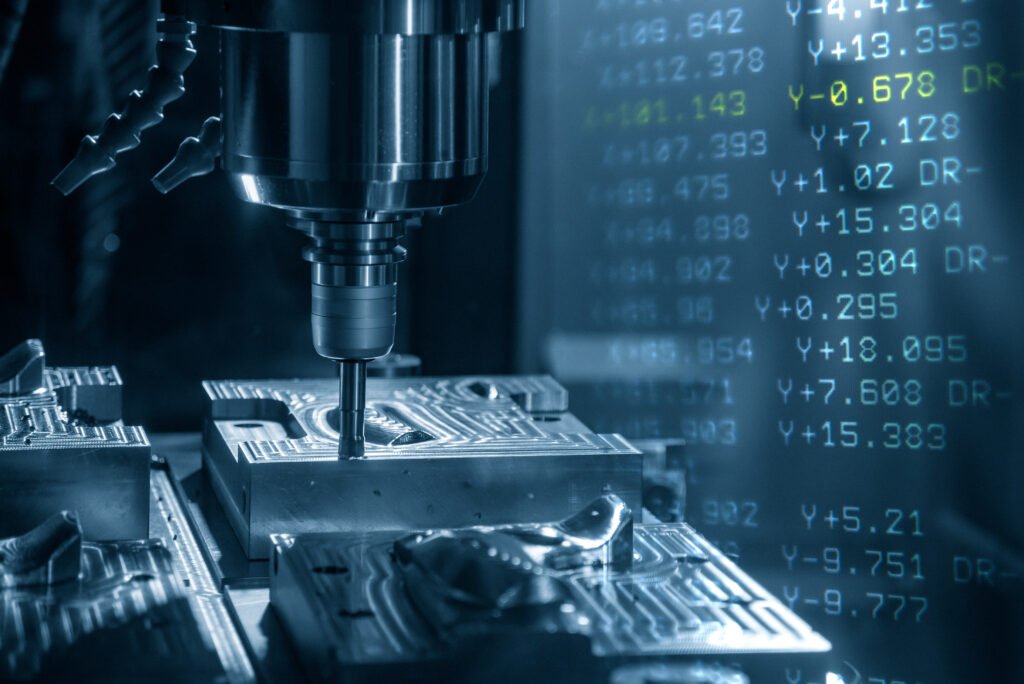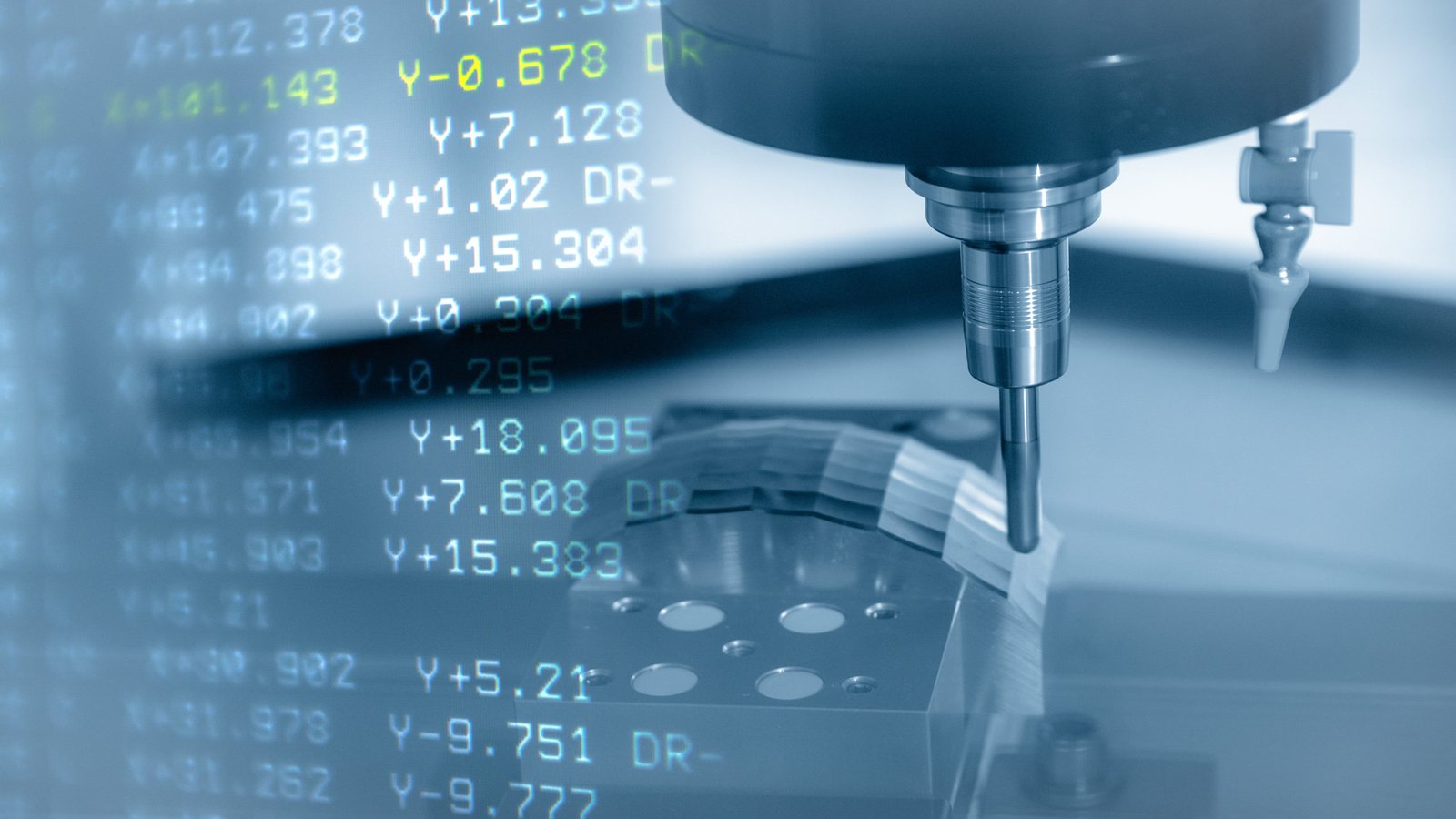A CNC programmer is a skilled professional responsible for creating the instructions that control the operation of CNC machines. These machines are used in manufacturing to automate tasks such as cutting, drilling, milling, and shaping various materials like metal, wood, plastic, and composites with precision and accuracy.
The CNC programmer’s role is pivotal in the production process. They translate design specifications and engineering drawings into a language that CNC machines can understand, known as G-code or similar programming languages. This involves writing code to specify the toolpath, cutting parameters, speeds, feeds, and other variables necessary to produce the desired part or component.
>>> Read more: What is CNC Programming? How Does CNC Programming Work?
CNC programmers must have a strong understanding of machining principles, materials, and tooling, as well as proficiency in programming languages and CAD/CAM (Computer-Aided Design/Computer-Aided Manufacturing) software. They work closely with engineers, designers, and machinists to ensure that the manufactured parts meet quality standards and adhere to the design requirements.
In addition to programming, CNC programmers often troubleshoot issues with machine operation, optimize programs for efficiency and quality, and stay updated on advancements in CNC technology and software.

Step-by-Step to become a Professional CNC Programmer
Step 1: Mastering the Craft
Craftsmanship forms the bedrock of programming. Without a deep understanding of the craft, programming becomes an elusive endeavor.
Choosing a career in mechanical cutting processing signifies a journey through the rugged terrain of industry. The theoretical knowledge gained in college pales in comparison to the demands of the factory floor. A machining engineer, in essence, embodies the wisdom of seasoned experience.
Initially tasked with office duties like technology development, material estimation, and quota calculations, it takes around 2-3 years of rigorous training to attain proficiency as a craftsman. Drawing from personal experience, I advise newly graduated college students to humbly learn from seasoned workers. Their decades of experience can impart invaluable wisdom, serving as a wellspring of knowledge.
These insights, unattainable from textbooks, are crucial in process selection, which involves a holistic assessment of equipment capabilities and personnel expertise. Becoming a proficient technologist hinges on garnering the support and trust of fellow employees. Through this extensive learning and accumulation period, one should aim to achieve the following technical standards and competencies:
- Proficiency in drilling, milling, boring, grinding, planer structures, and their respective process characteristics.
- Understanding of the properties of processing materials.
- A firm grasp of basic tool theory, including conventional cutting parameters.
- Familiarity with the enterprise’s process specifications, standards, and various processes to meet general requirements and follow conventional part routes.
- Knowledge of the tool systems utilized in NC machine tools.
Step 2: Mastering CNC Programming and Computer Software Applications
This step, I believe, is relatively straightforward. Programming instructions are typically limited in number, and various systems share similarities. Automatic programming software, though slightly more complex, requires learning to model. Readers are generally well-suited to grasp such knowledge.
In practical application, the criteria for a good program are as follows:
- Understanding Programming Instructions: Primarily, comprehension of instructions like G00 and G01 is crucial, with auxiliary instructions supplementing the programming process for convenience.
- Embracing Simplicity in Machining: The adage “the simplest method is the best method” holds true in machining. Practical experience among peers often corroborates this sentiment.

Step 3: Developing a Strong Foundation in Fixturing and Measurement Technology
Fixturing and measurement technology are integral components affecting the quality of parts processing and the precision of machine tools, reflecting the technical proficiency of personnel. Fixturing, in particular, demands specialized design tailored to specific parts, often presenting unforeseen challenges in CNC machining.
During debugging, inadequate part processing often stems from improper fixture positioning, clamping pressure points, and insufficient clamping force. Analyzing fixture-related issues is challenging due to their qualitative nature, making quantification difficult. Without experience in fixture design and part clamping, navigating these challenges becomes daunting. Seeking guidance from experienced precision coordinate boring machine technicians can be beneficial in this regard.
In instances where parts processing and Coordinate Measuring Machine (CMM) assessments fall short, manual measurements become indispensable. The accuracy of parts directly impacts the trust of both superiors and fellow workers. Therefore, mastering fixture design and measurement techniques is crucial for earning credibility in CNC machining.
Step 4: Acquaint Yourself with CNC Machine Tools and Master NC Machine Tool Maintenance
To become familiar with CNC machine tools entails several key aspects:
- Understanding NC electrical components and control principles to interpret alarm codes and diagnose issues effectively.
- Identifying factors influencing machine tool accuracy.
- Grasping the lubrication system, including the distribution of lubrication points, oil grade, and regular oil consumption.
- Understanding the cooling system, encompassing cutting and spindle cooling methods.
- Familiarizing oneself with the main transmission structure and the relationship between speed and torque for each machine tool.
- Recognizing the characteristics of machine tool guide rail pairs in terms of type (line rail or slide rail) and rigidity.
- Developing the ability to troubleshoot common operational faults, such as tool number errors.
- Proficiency in assessing machine tool accuracy through static and dynamic indicators and employing appropriate detection methods.
- Understanding the mechanism of tool storage and the principles of tool change.
Achieving proficiency in these areas typically requires at least three years of dedicated practice. However, accessing opportunities for learning can be challenging in many enterprises. Seeking guidance from equipment maintenance experts is advisable.
Regarding machine tool maintenance, the focus lies on regular upkeep:
- Monitoring the starting load of each axis daily to ensure normal operation.
- Regularly cleaning the air conditioning and air vent screens to prevent dust and iron powder accumulation, which can trigger inexplicable alarms and damage components irreparably.
Attention to detail and consistent maintenance practices are essential for maximizing the performance and longevity of CNC machine tools.

Step 5: Cultivate Effective Practices to Adapt to the Demands of CNC Machining
Mastery in numerical control processing demands humility, precision, composure, critical thinking, organizational skills, and independence.
Processing certain large parts involves not only material transformation but also the navigation of three-dimensional coordinates in space. The intricacies of calculating machining trajectories make it imperative to meticulously consider all aspects. Inaccurate calculations lead to chaotic program modifications during debugging, increasing the risk of errors. The adage “look before you leap” rings particularly true in this context.
The process of part debugging is a collaborative effort involving operators, inspectors, fixture designers, and assembly personnel. When issues arise, seeking input from team members, conducting thorough experiments, and refraining from hasty conclusions are paramount. Rather than placing excessive blame on employees for mistakes, maintaining a compassionate attitude fosters a supportive work environment.
CNC machine tool operations hinge on precise instructions. Prior to initiating the machine, a thorough understanding of its operating trajectory is essential. Rigor, attention to detail, and meticulousness are non-negotiable; failing to adhere to these principles can result in catastrophic consequences, from damaged parts to safety hazards. A rough temperament, lack of clarity, and ineffective communication are incompatible with operating CNC machine tools.
Maintaining a calm demeanor and avoiding panic-induced errors are essential during troubleshooting. In instances where parts repeatedly fail to meet standards, conducting organized analyses and assigning responsibility accordingly is crucial. Despite encountering varied explanations from different departments, maintaining independence and adhering to the principle of correct action over expedient solutions are paramount.
As a technologist, one’s expertise is inevitably constrained by the environment. However, once internal technologies are mastered, it is imperative to broaden one’s horizons by staying abreast of advancements in processing technologies domestically and internationally.
Conclusion
A professional CNC programmer is not merely someone who writes code or operates machines; they are craftsmen who orchestrate precision and creativity, seamlessly blending technical expertise with artistic vision. By embracing the complexities of CNC programming and staying abreast of advancements in technology, aspiring CNC programmers can elevate their craft and make significant contributions to the world of manufacturing.
As you embark on your journey to become a professional CNC programmer, remember to embrace challenges, seek guidance from experienced mentors, and never stop learning. With determination and perseverance, you can unlock a world of opportunities and become a true master of the machine.
